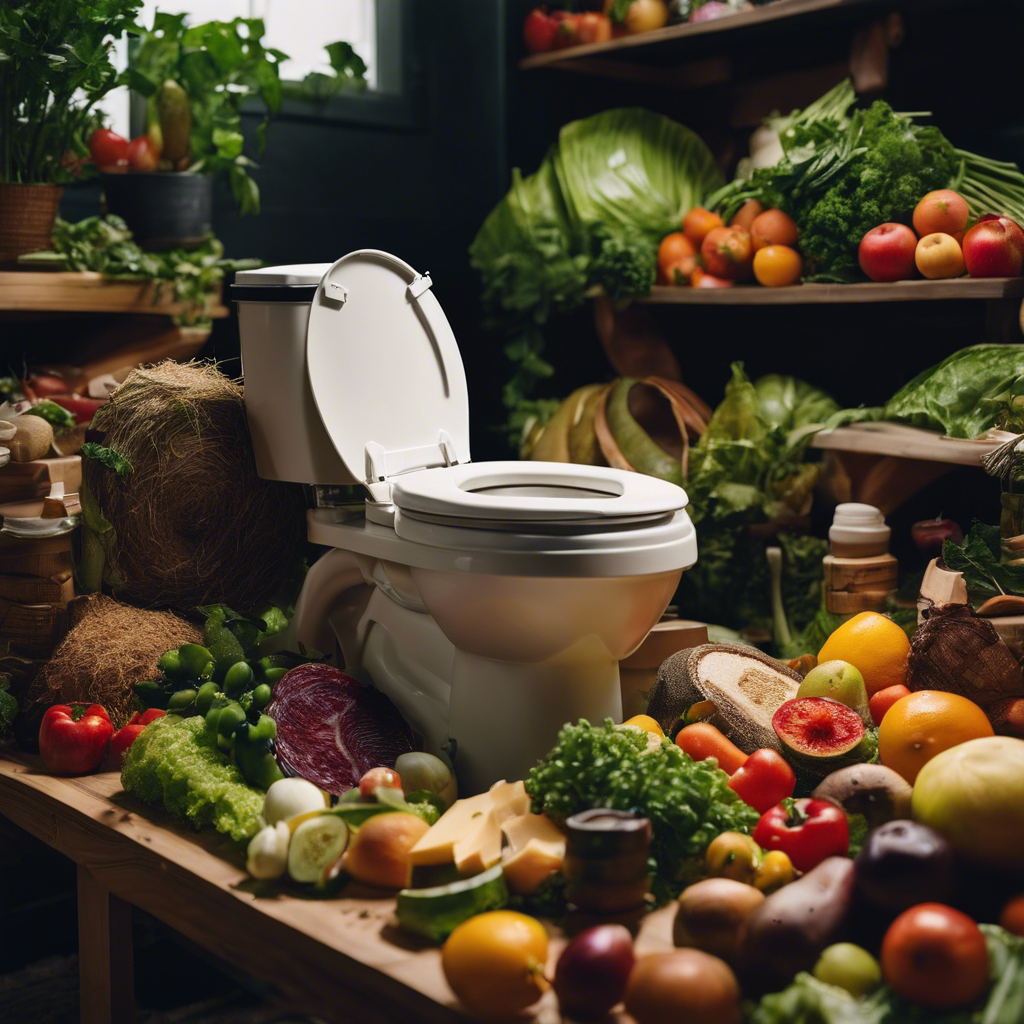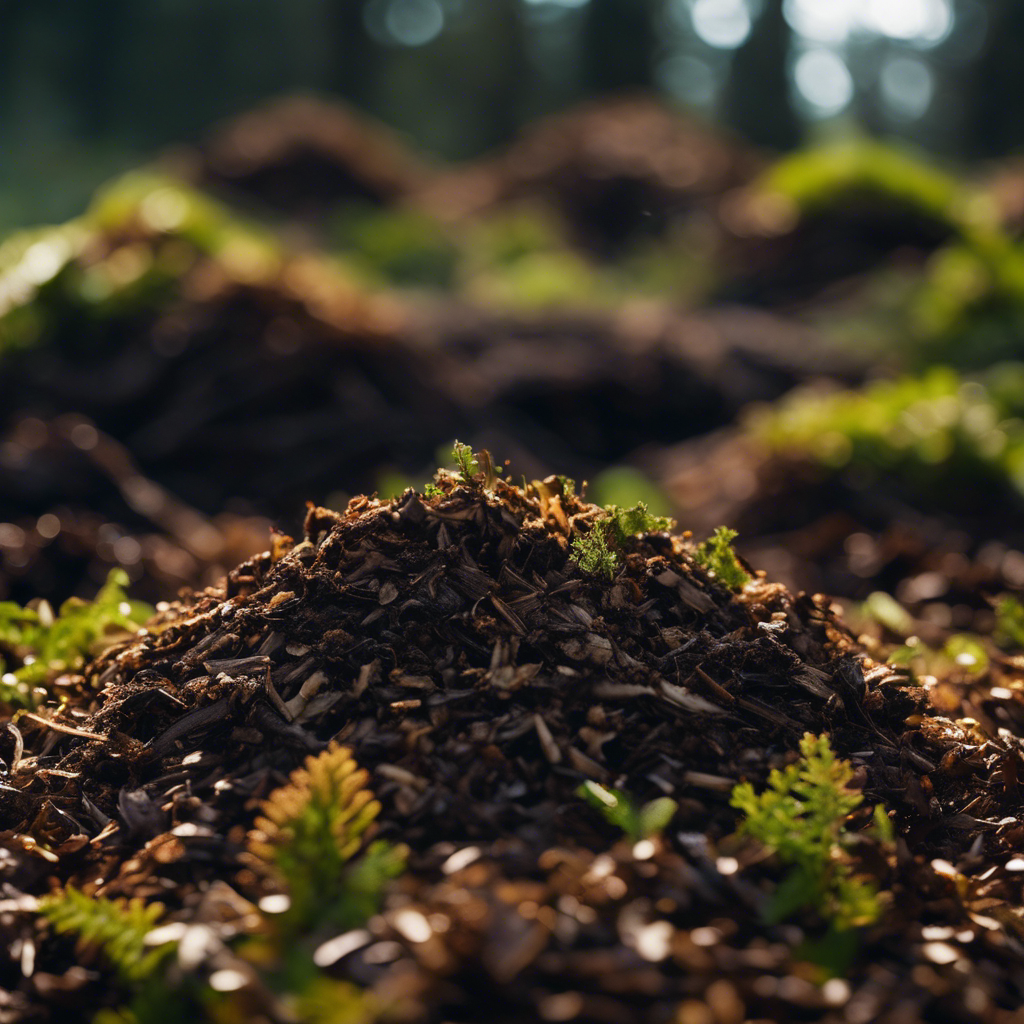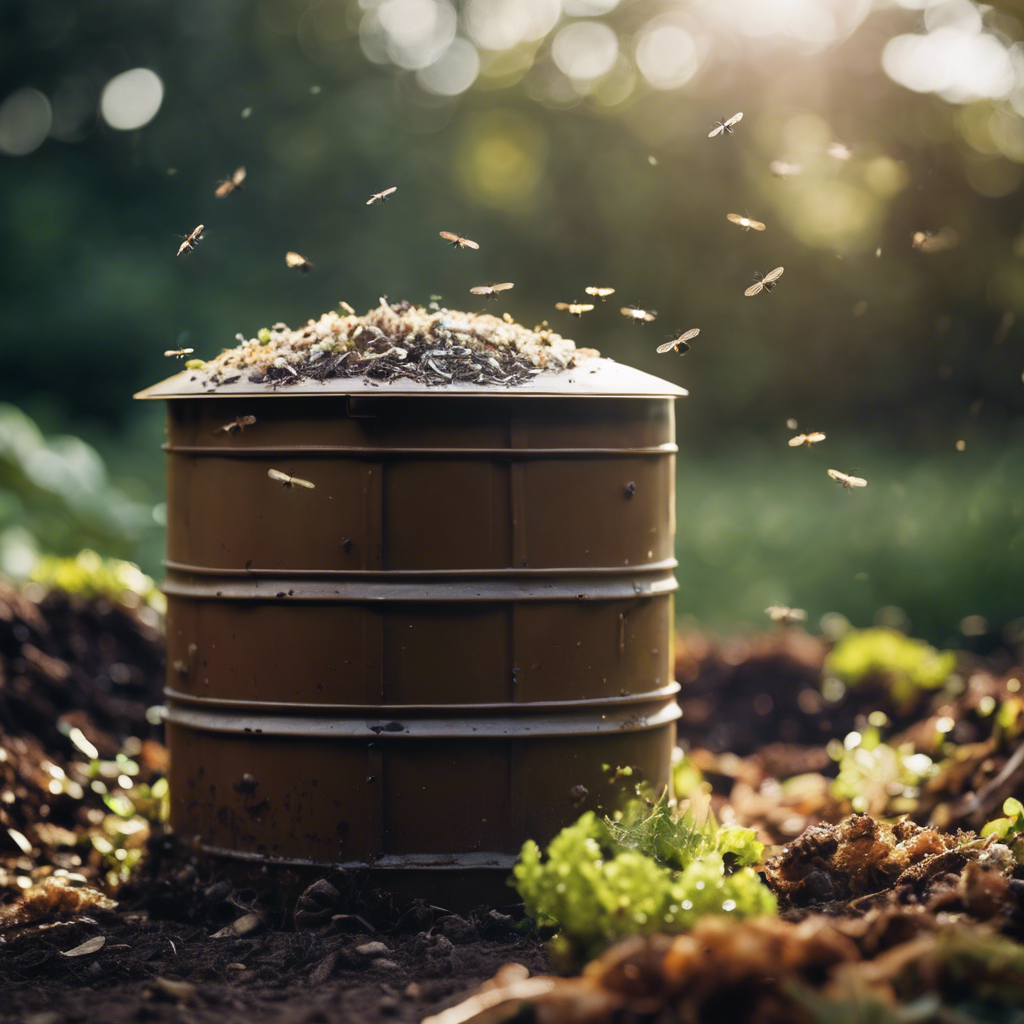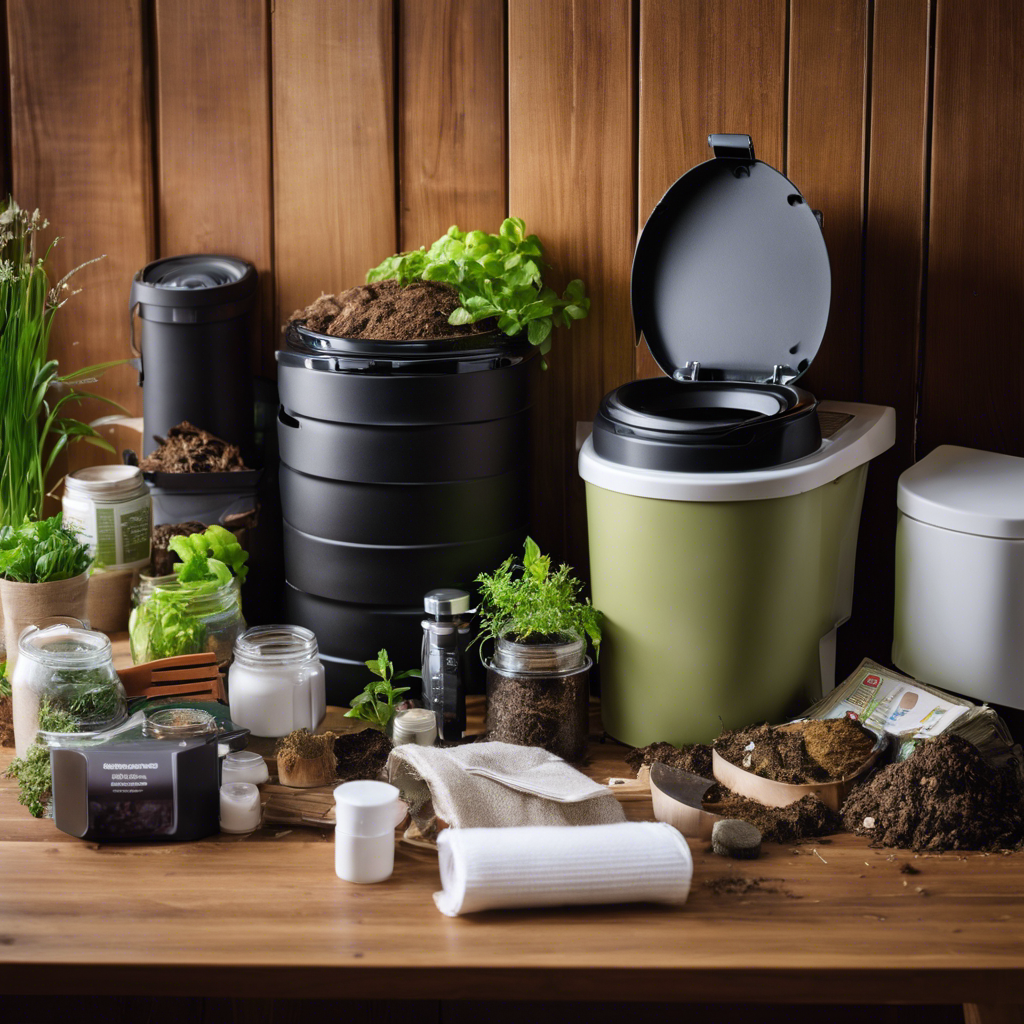I’ve been exploring the world of composting toilets, and let me tell you, it’s been an eye-opening journey.
Did you know that composting toilets are currently illegal in many municipalities? This poses a real challenge when it comes to disposal.
As someone passionate about sustainable living, I’ve faced my fair share of dilemmas. But fear not! In this article, I’ll share my experiences, challenges, and potential solutions for managing waste with composting toilets.
Let’s dive in and find sustainable ways to tackle these woes.
Sewer Line Costs: Exploring the High Quotes

I can’t believe the high quotes I’ve been getting for sewer line costs. It’s been a real shock to see the numbers they’re throwing at me.
But I’m determined to find alternatives and cost-saving measures. There’s to be a way to tackle this without breaking the bank.
I’ve been researching sewer line alternatives and exploring different options to save money. It’s important to me to find a solution that’s both cost-effective and efficient.
I’m open to considering different technologies and methods that can help reduce the overall expenses. By exploring these cost-saving measures, I hope to find a solution that not only meets my needs but also fits within my budget.
Lack of Information: The Search for Composting Toilet Experiences

There are only a few online resources available, making it difficult to find at least five reliable composting toilet experiences. As someone who desires mastery in this topic, it’s frustrating to encounter such a lack of information.
Composting toilet experiences are valuable for learning about the challenges and successes that others have faced. It’s important to have access to a variety of experiences in order to make informed decisions about composting toilet systems. Without this information, it becomes difficult to navigate the potential pitfalls and find the best solutions.
I hope that in the future, more individuals will share their composting toilet experiences online, providing a wealth of knowledge for those of us who are seeking mastery in this area.
The Reality Check: Positive Overall Experience, but Recent Incident Reveals Challenges

Despite the positive overall experience, a recent incident has revealed challenges with the composting toilet.
1) Sewer line alternatives are being considered due to the high cost of quotes starting at $50,000.
2) Composting toilet maintenance can be tricky as there’s limited information online about experiences.
3) Diet plays a significant role in the ease of using a composting toilet, with a good diet helping to extract more moisture and nutrients from food.
4) Composting toilets are currently illegal in many municipalities, leading to the need for alternative disposal options such as bagging waste in biodegradable plastic and sending it with city trash.
These challenges highlight the importance of finding sustainable solutions and exploring other options like a mix of pine bedding and coconut coir.
Diet Matters: How Your Food Choices Impact Composting Toilet Use

Eating a nutrient-rich diet greatly enhances the efficiency of composting toilet use. When it comes to composting toilets, maintaining a healthy diet can make a significant difference in odor control and overall maintenance. By consuming foods that are high in nutrients, we can extract more moisture and nutrients from our waste, making it easier for the composting process to break down and decompose the waste effectively. This means less odor and a more efficient composting toilet system.
Additionally, a nutrient-rich diet can help promote a healthier balance of bacteria in the compost, which further aids in odor control and maintenance. So, remember to choose your food wisely and support your composting toilet experience with a diet that maximizes efficiency and minimizes any potential challenges.
Sustainable Disposal: Navigating the Legality and Options

I have explored the legality and various options for sustainable disposal, and it’s evident that there are limited choices available for navigating this issue.
When it comes to composting toilet legality, many municipalities still consider it illegal. However, there are a few options for sustainable disposal that can be considered:
-
Bagging waste in biodegradable plastic and sending it with city trash: This is a current method that’s being used, although it may not be the most environmentally friendly option.
-
Switching to a mix of pine bedding and peat moss: Peat moss, although not sustainable, is commonly used. However, coconut coir can be considered as a more sustainable alternative.
-
Outdoor setup and fly larvae issue: Keeping the bucket setup outdoors, separating liquids and solids, and using a tight-sealed lid can help prevent insect infestations. In case of fly larvae, they can be easily cleaned off with water and sunlight.
-
Additional resources and recommendations: There are various resources available online for further reading, including articles on bucket toilets and recommendations for urine diverting toilets with French Drain systems. Diatomaceous earth can be used as an additive for odor control, and proper anaerobic composting methods should be followed for long-term storage. The Airhead separating toilet with coir and enzymes is also recommended.
Navigating the legality and options for sustainable disposal with composting toilets can be challenging, but with careful consideration, it’s possible to find solutions that work for both the environment and local regulations.
Bagging It Up: Biodegradable Plastic and City Trash Disposal

Fortunately, biodegradable plastic can be conveniently used to bag up city trash and be disposed of in an environmentally friendly manner. However, when it comes to composting toilets, exploring alternatives and improving composting efficiency is crucial.
While bagging waste in biodegradable plastic and sending it with city trash is one disposal option, it may not be the most sustainable solution in the long run. Therefore, it’s important to consider other methods that can improve composting efficiency.
One alternative worth exploring is using a mix of pine bedding and peat moss, although the sustainability of peat moss is questionable. Coconut coir could be a more environmentally friendly substitute.
Pine Bedding Vs. Peat Moss: Considerations for a Better Mix

Switching to a mix of pine bedding and peat moss could potentially improve the composting efficiency of the toilet system. Here are four considerations to keep in mind when choosing composting toilet materials and long-term storage methods:
-
Pine bedding: Using pine bedding can help absorb moisture and control odors in the composting toilet system. It provides a natural scent and is readily available.
-
Peat moss: Peat moss is often used in composting toilets due to its high carbon content and ability to retain moisture. However, it isn’t a sustainable resource, so alternatives like coconut coir should be considered.
-
Composting efficiency: The right mix of pine bedding and peat moss can create an optimal environment for decomposition, ensuring efficient breakdown of waste materials.
-
Long-term storage: Proper anaerobic composting methods should be employed to ensure safe long-term storage of composted waste. This will help minimize any potential risks associated with the composting process.
Considering these factors when selecting composting toilet materials and long-term storage methods can lead to a more effective and sustainable waste management system.
Outdoor Setup Woes: Fly Larvae and Preventive Measures

While dealing with the outdoor setup, I discovered a swarm of fly larvae in the bucket toilet, but easily cleaned them off with water and sunlight. It was quite an unpleasant surprise, but I quickly took action to ensure proper hygiene.
Flies can become more active in warmer weather, so it’s important to be proactive in preventing their growth. One preventive measure I’m considering is using a Mosquito Dunk, which can help control mosquito larvae and potentially prevent fly larvae as well.
Additionally, I’m thinking about adding urine diverters to the setup in the future. This can help separate the liquids from the solids, reducing the chances of attracting flies.
Overall, maintaining good hygiene and implementing mosquito control measures are vital to ensuring a clean and comfortable outdoor composting toilet experience.
Additional Resources and Recommendations for Composting Toilet Woes

I found several helpful resources and recommendations for addressing my composting toilet woes, including an article on bucket toilets and a recommendation for an Airhead separating toilet with coir and enzymes. These resources provided valuable insights into diatomaceous earth alternatives and long-term composting methods.
Here are some key takeaways:
-
Bucket toilets: Exploring the use of bucket toilets can provide a cost-effective and sustainable option for managing waste.
-
Airhead separating toilet: This recommendation offers a solution for separating liquids and solids, promoting efficient composting and odor control.
-
Diatomaceous earth alternatives: I discovered that there are alternative additives, such as coconut coir, that can effectively control odors in composting toilets.
-
Long-term composting methods: Proper anaerobic composting methods were emphasized as essential for the long-term storage and decomposition of waste.
Frequently Asked Questions
Are Composting Toilets Legal in All Municipalities?
Composting toilets are not legal in all municipalities. There are regulations that dictate their use. Despite the challenges, there are pros and cons to consider when deciding to use a composting toilet.
What Are the Alternatives to Using Peat Moss in Composting Toilets?
There are several eco-friendly composting options available as alternatives to using peat moss in composting toilets. Some options include using coconut coir, sawdust, or a mix of pine bedding and peat moss.
How Can I Prevent Fly Larvae From Infesting My Outdoor Composting Toilet Setup?
To prevent fly infestation in my outdoor composting toilet setup, I can take measures like keeping a tight seal on the bucket lid, cleaning off any larvae with water and sunlight, and considering the use of Mosquito Dunks to prevent larvae growth. Composting toilet maintenance is key.
What Are Some Effective Methods for Odor Control in Composting Toilets?
Effective methods for odor control in composting toilets include using diatomaceous earth as an additive, proper anaerobic composting methods, and utilizing an Airhead separating toilet with coir and enzymes. Using sawdust helps absorb moisture and control odors.
Can You Recommend a Specific Brand or Model of Urine Diverting Toilet With a French Drain System?
Sure, I can recommend a urine diverting toilet with a French drain system. It’s an effective solution for composting toilet maintenance and waste management.
Conclusion
In conclusion, while composting toilets offer a sustainable solution for waste management, the challenges and dilemmas they present can sometimes leave us feeling a bit flushed.
From navigating disposal restrictions to dealing with outdoor pests, it’s clear that this eco-friendly option requires some creative problem-solving. But hey, who said saving the planet would be a piece of cake?
Let’s continue to explore and innovate, finding new ways to tackle our composting toilet woes.


